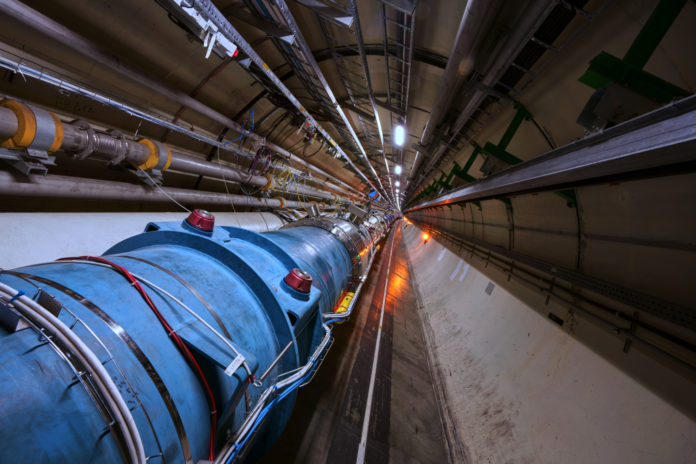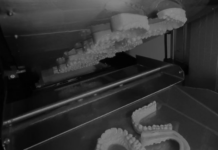The Large Hadron Collider (LHC) is the world’s largest and most powerful particle accelerator. It first started up on 10 September 2008, and remains the latest addition to CERN’s accelerator complex. The LHC consists of a 27-kilometre ring of superconducting magnets with a number of accelerating structures to boost the energy of the particles along the way.
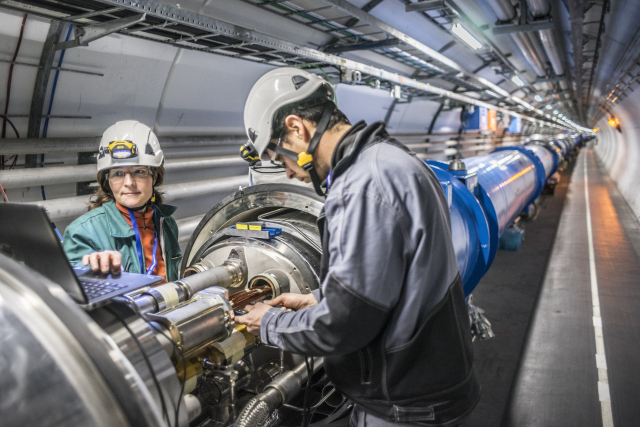
(Image: Anna Pantelia/CERN)
Inside the accelerator, two high-energy particle beams travel at close to the speed of light before they are made to collide. The beams travel in opposite directions in separate beam pipes – two tubes kept at ultrahigh vacuum. They are guided around the accelerator ring by a strong magnetic field maintained by superconducting electromagnets. The electromagnets are built from coils of special electric cable that operates in a superconducting state, efficiently conducting electricity without resistance or loss of energy. This requires chilling the magnets to ‑271.3°C – a temperature colder than outer space. For this reason, much of the accelerator is connected to a distribution system of liquid helium, which cools the magnets, as well as to other supply services.
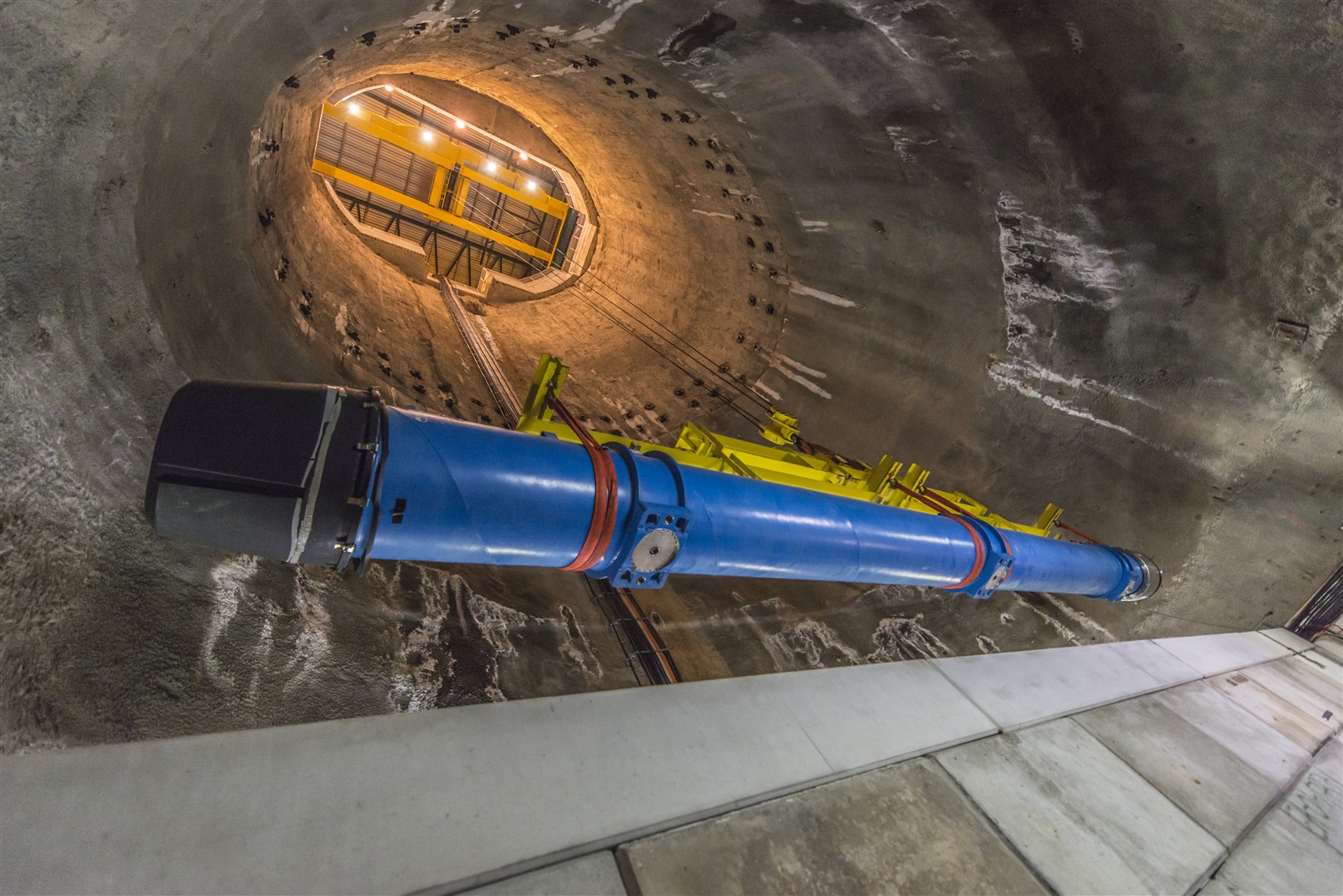
Thousands of magnets of different varieties and sizes are used to direct the beams around the accelerator. These include 1232 dipole magnets 15 metres in length which bend the beams, and 392 quadrupole magnets, each 5–7 metres long, which focus the beams. Just prior to collision, another type of magnet is used to “squeeze” the particles closer together to increase the chances of collisions. The particles are so tiny that the task of making them collide is akin to firing two needles 10 kilometres apart with such precision that they meet halfway.
All the controls for the accelerator, its services and technical infrastructure are housed under one roof at the CERN Control Centre. From here, the beams inside the LHC are made to collide at four locations around the accelerator ring, corresponding to the positions of four particle detectors – ATLAS, CMS, ALICE and LHCb.
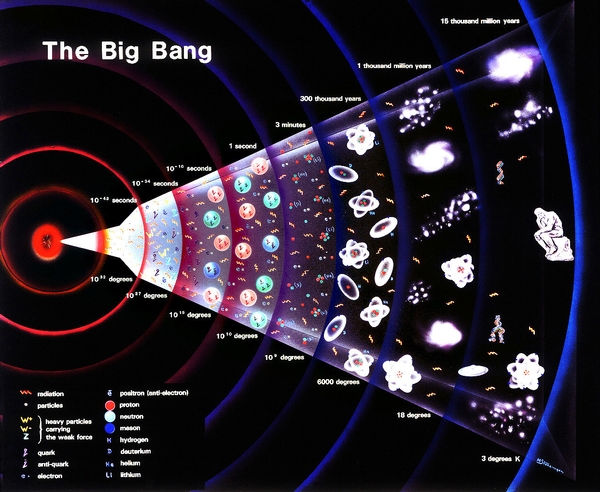
(Source: CERN)
However, the collider is only one of three essential parts of the LHC project. The other two are:
- The Detectors
Each of the four main detectors sit in huge chambers around the LHC ring to detect the outcomes of the particles colliding. ATLAS, ALICE, CMS and LHCb. - Worldwide LHC Computing Grid (WLCG)
A global network of computers and software that is essential to processing the masses of data recorded by all of the LHC’s detectors.
The total cost of building the LHC was approximately £3.74 billion, made up of three major components:
- The Accelerator (£3 billion)
-
The Experiments (£728 million)
- The Computers (£17 million)
The total cost was shared mainly by CERN’s 20 Member States, with significant contributions from the six observer nations.
The LHC project involved 111 nations in designing, building and testing equipment and software, and now continues with them participating in experiments and analysing data. The degree of involvement varies between countries, with some able to contribute more financial and human resource than others.
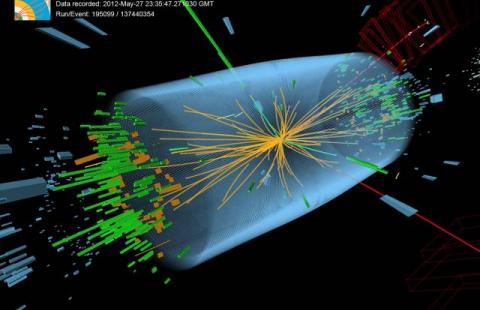
Member States
Today CERN has 23 Member States: Austria, Belgium, Bulgaria, Czech Republic, Denmark, Finland, France, Germany, Greece, Hungary, Israel, Italy, Netherlands, Norway, Poland, Portugal, Romania, Serbia, Slovakia, Spain, Sweden, Switzerland and United Kingdom.
Cyprus and Slovenia are Associate Member States in the pre-stage to Membership. India, Lithuania, Pakistan, Turkey and Ukraine are Associate Member States.
The European Union, Japan, JINR, the Russian Federation, UNESCO and the United States of America currently have Observer status.
Non-Member States with co-operation agreements with CERN include Albania, Algeria, Argentina, Armenia, Australia, Azerbaijan, Bangladesh, Belarus, Bolivia, Brazil, Canada, Chile, China, Colombia, Costa Rica, Croatia, Ecuador, Egypt, Estonia, North Macedonia, Georgia, Iceland, Iran, Jordan, Korea, Malta, Mexico, Mongolia, Montenegro, Morocco, New Zealand, Peru, Saudi Arabia, South Africa, United Arab Emirates and Vietnam.
























